In writing the Virginia Declaration of Rights, U.S. Founding Father George Mason IV took a stand for individual rights. His ardent defense would later inform the Declaration of Independence and the Constitution’s Bill of Rights—documents critical for securing liberties.
But a challenging irony rests in Mason’s words versus his actions.
“There’s this rather profound discomfort for us in reading about George Mason saying, we don’t want to be slaves to the British government, when he’s enslaving other people,” said Rebecca Martin, director of education and guest experiences at Gunston Hall, the historic home of George Mason IV.
Mason called slavery a slow poison that contaminates the country, Martin said, yet he kept hundreds of people in bondage.
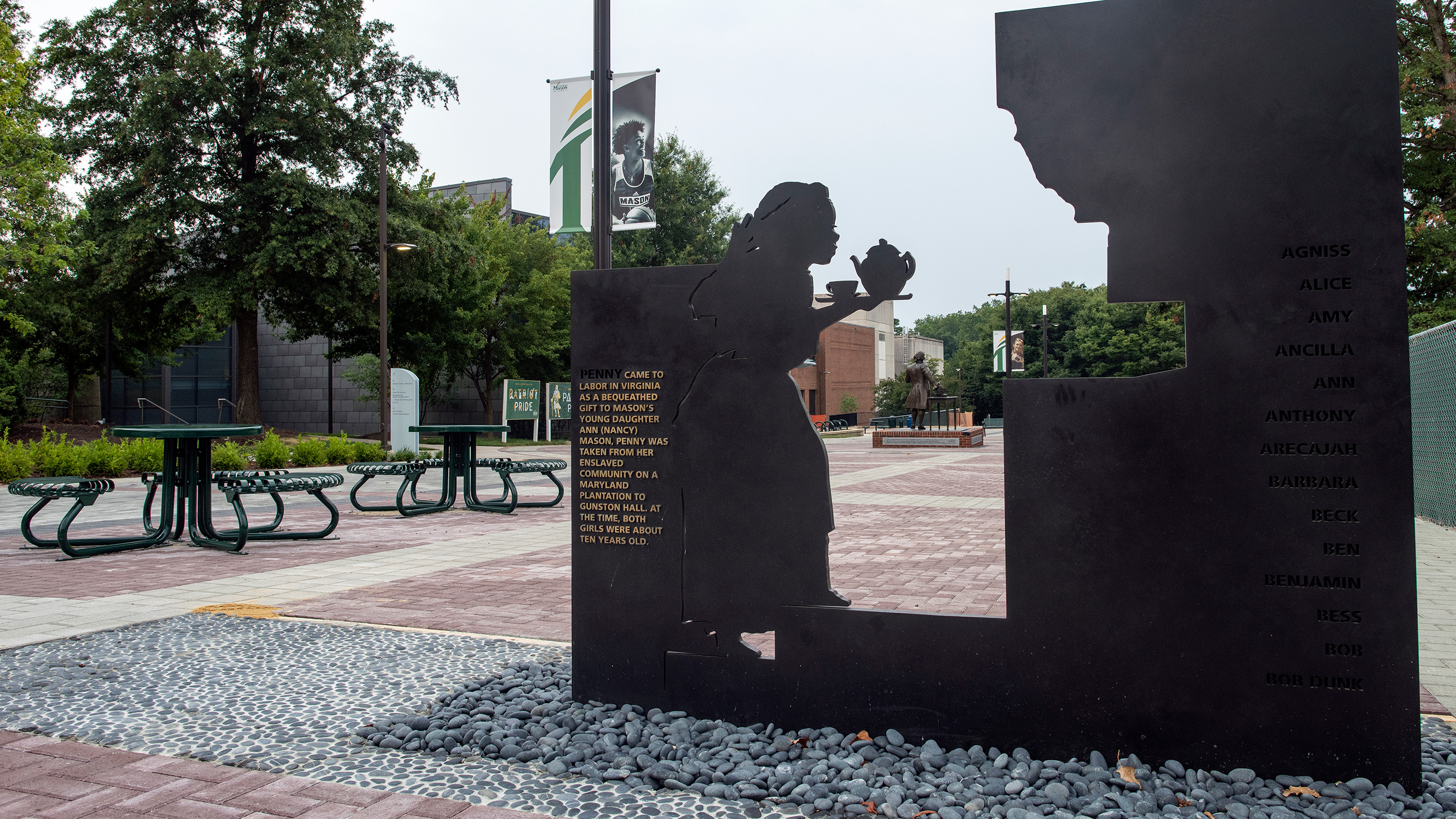
Exploring a Complicated History
The complex history of George Mason University’s namesake is something the institution has explored for some time.
In 2016, Mason students, mentored by faculty, explored the little-known slave-holding legacy of the university’s namesake, which led to the creation of the Enslaved People of George Mason Memorial on the Fairfax Campus.
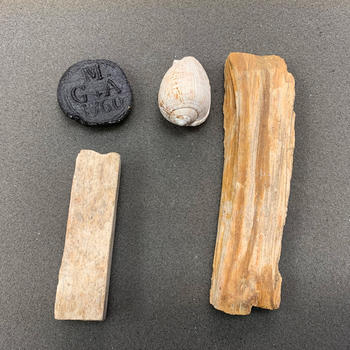
A group of students also supported Gunston Hall in eventually finding the dwellings of the enslaved when they dug square pits at 20-foot intervals to the east of the mansion in 2000, said Gunston Hall archaeologist David Shonyo. In 2013, when Shonyo was trying to find these dwellings, he dug farther down at a spot the students recorded as having darker soil, charcoal and artifacts.
“Thanks to the careful record keeping of students years before, I was able to almost immediately find what we now call the East Yard Quarter,” Shonyo said. “I found what turned out to be a pit dug into the floor of a slave dwelling that had been used as a receptacle for household refuse.”
Bringing Their Stories to Life
Bringing narratives of the enslaved people to the forefront is ongoing. Last year, senior painting major Katherine Ashby was commissioned to create life-size portraits of George Mason IV and other people who lived at Gunston Hall, including some of the people held in slavery there.
“One of the challenges of working in a historic house museum is helping visitors to understand that spaces which today seem quiet and pristine were once bustling and full of life,” said Kate Steir, curator at Gunston Hall. “Katherine’s illustrations help to do that very important work.”
“I’ve had visitors tell me that [Ashby’s] figures draw them into the spaces and help visual learners who previously struggled to imagine the full range of people who lived and worked at Gunston Hall in the 18th century,” Steir said.
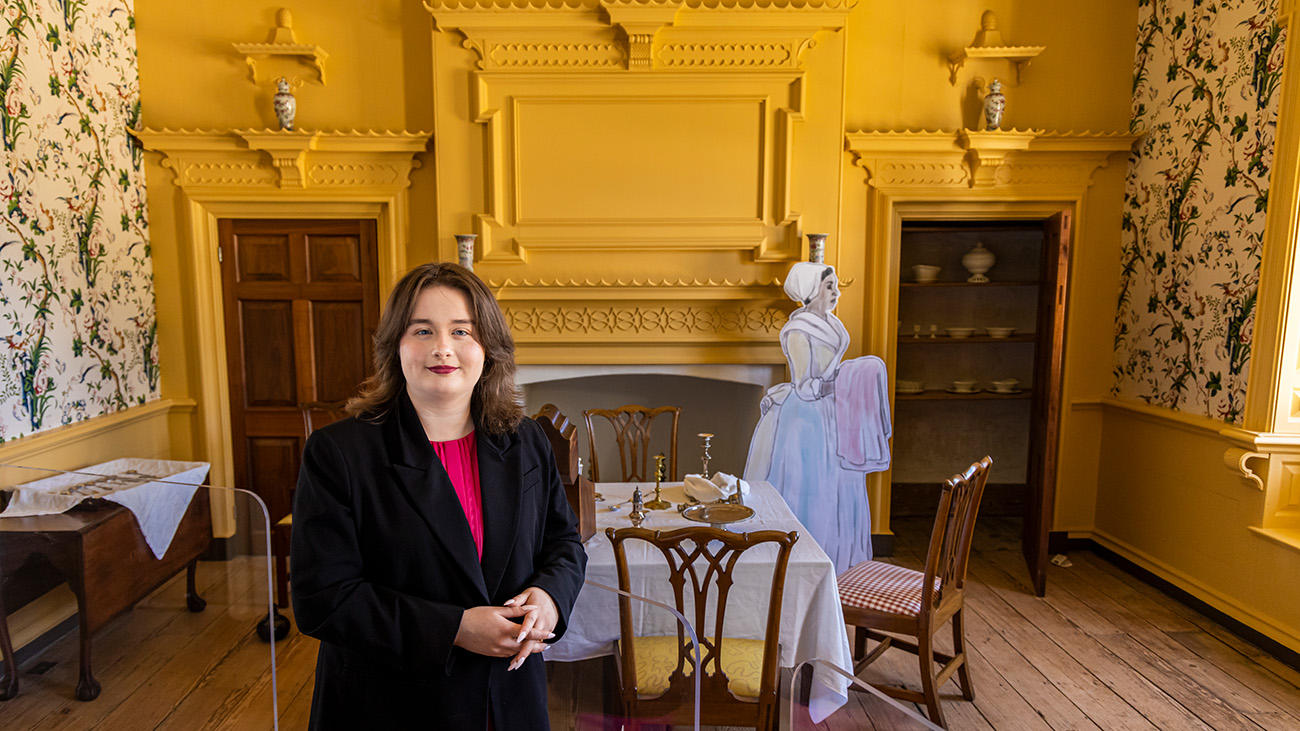
“It’s essential to tell the true, honest and full history of Gunston Hall and the people that were here, and to provide humanity and respect to the enslaved,” said Scott Stroh, executive director of Gunston Hall. “In rebuilding [the quarters], we’ll create some structures we know would have been located here and for the first time really create a tangible presence.”
Stroh said The East Yard project, which will begin in March 2023, will include more archaeology, as well as scholarship to expand knowledge of the enslaved community.
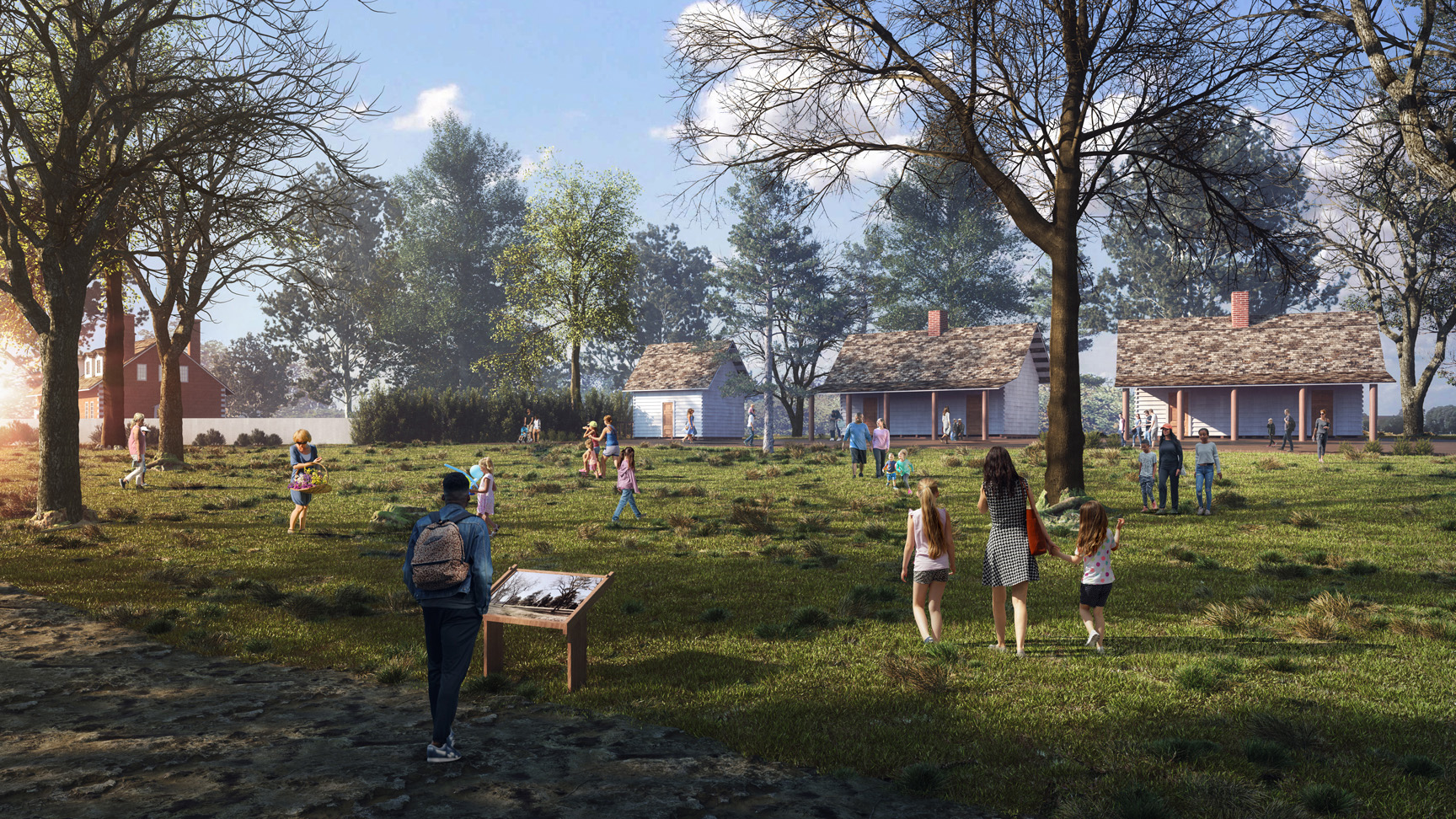
For Black History Month, we went to Gunston Hall to learn not only about the Mason family, but some of the stories of the enslaved:
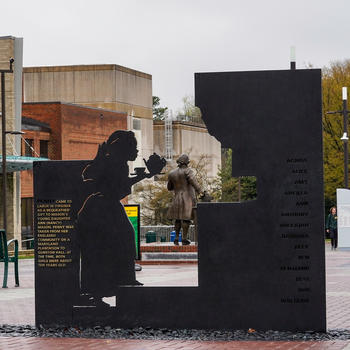
Penny
“Penny was a young girl when she came to Gunston Hall. She was enslaved in Maryland at Ann Mason [George Mason IV’s first wife]’s childhood home plantation. Anne Mason’s father essentially gave her as a gift to his granddaughter [Nancy Mason], who was about 10 years old. We believe Penny was about 10 when she was forced to leave her family and come here to have her life and her fate controlled by another 10-year-old girl.
“She lived with Nancy Mason, the oldest daughter, for the rest of her life. She never married. She traveled with Nancy. When Nancy did marry, she did the work of a lady’s maid.” —Kate Steir
Dick
“Dick was enslaved in the house and was in liveried uniform, waiting on people and doing various tasks. We do know that he was present for a lot of conversations between people like George Mason and George Washington, and George Mason and James Madison. They were talking about freedom and the revolution. We also know that during this process, the British government offered freedom to anyone who was enslaved who ran away and fought for them.
“Even if people who were enslaved weren’t able to formally vote, they had a sense of their own politics and a sense of ways they could participate, either through physically moving themselves or choosing to stay.” —Kate Steir
Nell
“Nell was enslaved by the Masons and was trained as a midwife. These specialized skills allowed her to help other women and to earn money. Nell tended to enslaved women when they gave birth. She even traveled to neighboring plantations to help. But babies weren’t born every day. At other times, she likely cared for the Mason children.” —Courtesy of Gunston Hall
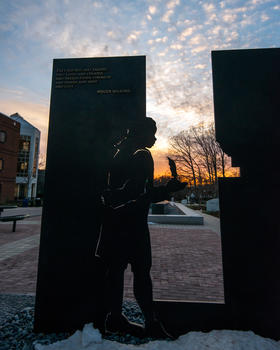
James
“James was a man of mixed race held in slavery by the Masons. He served as George Mason’s manservant or valet, and was likely on duty around the clock. James’s work likely kept him in the mansion most of the week and away from his family. He was probably required to accompany George on his long trips away from Gunston Hall.” —Courtesy of Gunston Hall
Poll
“Poll spent her entire life in slavery at Gunston Hall. She had at least one child. His name was Henry. We know that Poll worked in the mansion because George Mason described her as ‘House Poll.’” —Courtesy of Gunston Hall
Joe
“Joe, an enslaved man, may have worked in the house, the kitchen yard, and the garden, moving from one space to another as he was needed. Perhaps his tasks included delivering firewood to the mansion’s grand rooms, weeding and watering in the garden, and transferring vegetables from the garden to the kitchen.” —Courtesy of Gunston Hall
